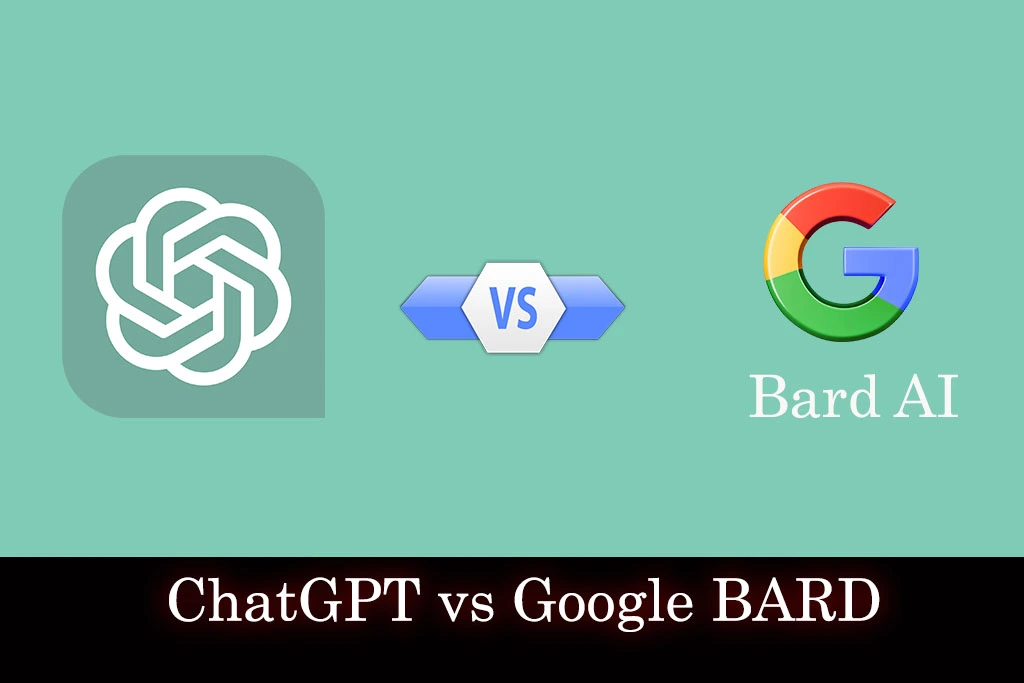Language models have become an essential tool for many industries, from natural language processing to chatbots and virtual assistants. Two of the most widely used language models are ChatGPT and Google BARD. In this blog post, we will compare these two models, highlighting their strengths and weaknesses and examining their use cases.
What are ChatGPT and Google BARD?
ChatGPT is a large-scale language model developed by OpenAI that uses deep learning techniques to generate human-like text. It has been trained on a massive dataset of web pages and text documents, allowing it to generate high-quality responses to a wide range of queries.
Google BARD, on the other hand, is a language model developed by Google that uses a combination of rule-based and machine learning techniques to provide natural language responses to user queries. It is designed to understand the context of a conversation and provide relevant and useful responses.
Accuracy and Precision
One of the most critical factors in a language model is accuracy and precision in generating responses. In terms of accuracy, both ChatGPT and Google BARD are quite reliable. ChatGPT has been shown to outperform Google BARD in several benchmarks, including the Conversational Intelligence Challenge and the SuperGLUE benchmark.
However, when it comes to precision, Google BARD has the upper hand. Its ability to understand the context of a conversation and provide relevant responses is unrivaled, making it the ideal choice for virtual assistants and chatbots.
Ease of Use
Another important factor in language models is ease of use. ChatGPT has a more user-friendly interface than Google BARD, making it easier to use for those who are not familiar with advanced AI technologies. Its natural language processing capabilities make it easy to generate responses to a wide range of queries.
Google BARD, on the other hand, is more complex and requires more technical knowledge to use effectively. However, its ability to understand the context of a conversation makes it a powerful tool for developers who want to create sophisticated virtual assistants and chatbots.
Use Cases
Both ChatGPT and Google BARD have a wide range of use cases. ChatGPT is particularly useful for generating text for content marketing, social media posts, and customer service chatbots. Its natural language processing capabilities make it easy to generate high-quality responses to a wide range of queries.
Google BARD is particularly useful for virtual assistants and chatbots. Its ability to understand the context of a conversation and provide relevant responses makes it ideal for creating sophisticated chatbots that can handle complex conversations.
Language Support
Google BARD supports a wider range of languages than ChatGPT. Currently, Google BARD can understand and respond in more than 100 languages, while ChatGPT is limited to English and a few other languages.
Training Data
The training data used to develop ChatGPT and Google BARD is different. ChatGPT was trained on a large dataset of internet text, including web pages, news articles, and books. Google BARD, on the other hand, was trained on a mix of sources, including social media, news articles, and web pages.
Computational Resources
Both ChatGPT and Google BARD require a lot of computational resources to operate effectively. However, Google BARD has an advantage here as it is built on top of Google’s cloud infrastructure, which can scale up and down to meet demand. ChatGPT, on the other hand, requires significant resources to run and may not be feasible for smaller projects.
Customizability
Both ChatGPT and Google BARD can be fine-tuned for specific use cases. However, ChatGPT is more customizable than Google BARD as it allows for more granular control over the model’s parameters and architecture.
Applications
ChatGPT and Google BARD are used in various applications. ChatGPT is commonly used in chatbots, virtual assistants, and content generation, while Google BARD is used in Google Assistant and other virtual assistants.
Cost
Both ChatGPT and Google BARD have costs associated with them. ChatGPT requires significant computational resources, which can be expensive. Google BARD is available through Google Cloud, and the pricing varies depending on the number of requests and usage.
Training Time
The training time for ChatGPT and Google BARD is significantly different. ChatGPT can take several weeks to train on a large dataset, whereas Google BARD can be trained in a matter of hours using transfer learning techniques.
Privacy and Security
Both ChatGPT and Google BARD require access to user data to function effectively. However, privacy and security concerns may arise when using these models, particularly when dealing with sensitive information. It is essential to consider the privacy and security implications of using these models and take appropriate measures to protect user data.
Open Source Availability
ChatGPT is available as an open-source project, allowing developers to modify and customize the model to suit their needs. Google BARD, on the other hand, is not currently available as an open-source project.
Model Size
ChatGPT is a larger model than Google BARD. The current version of ChatGPT has 175 billion parameters, while Google BARD has 11 billion parameters. This means that ChatGPT can generate more complex responses, but it also requires significantly more computational resources to operate.
Real-time Performance
Real-time performance is an essential factor in language models used for virtual assistants and chatbots. Google BARD is designed to provide real-time responses, making it ideal for these applications. ChatGPT, on the other hand, may require more time to generate responses, particularly for more complex queries.
Final Thoughts
In conclusion, ChatGPT and Google BARD are two of the most advanced language models available. Both have their strengths and weaknesses, and the choice between them depends on the specific application and use case. ChatGPT is more customizable and can generate more complex responses, but it requires more computational resources and may take longer to generate responses. Google BARD, on the other hand, is more precise and can provide real-time responses, making it ideal for virtual assistants and chatbots.
Recommendations
Frequently asked questions about ChatGPT vs Google BARD:
Q. What is the difference between ChatGPT and Google BARD?
ChatGPT and Google BARD are both advanced language models used in various applications. ChatGPT is designed for content generation and chatbots, while Google BARD is designed for virtual assistants and other applications that require a deep understanding of the context of a conversation.
Q. Which is better, ChatGPT or Google BARD?
The choice between ChatGPT and Google BARD depends on the specific application and use case. ChatGPT is more customizable and can generate more complex responses, but it requires more computational resources and may take longer to generate responses. Google BARD, on the other hand, is more precise and can provide real-time responses, making it ideal for virtual assistants and chatbots.
Q. What are the language support capabilities of ChatGPT and Google BARD?
Currently, ChatGPT is limited to English and a few other languages, while Google BARD can understand and respond in more than 100 languages.
Q. How do ChatGPT and Google BARD differ in terms of training time?
ChatGPT can take several weeks to train on a large dataset, whereas Google BARD can be trained in a matter of hours using transfer learning techniques.
Q. What are the privacy and security implications of using ChatGPT and Google BARD?
Both ChatGPT and Google BARD require access to user data to function effectively. It is essential to consider the privacy and security implications of using these models and take appropriate measures to protect user data.
Q. Are ChatGPT and Google BARD available as open-source projects?
ChatGPT is available as an open-source project, allowing developers to modify and customize the model to suit their needs. Google BARD, on the other hand, is not currently available as an open-source project.
Q. What is the cost associated with using ChatGPT and Google BARD?
Both ChatGPT and Google BARD have costs associated with them. ChatGPT requires significant computational resources, which can be expensive. Google BARD is available through Google Cloud, and the pricing varies depending on the number of requests and usage.
Q. What are the applications of ChatGPT and Google BARD?
ChatGPT is commonly used in chatbots, virtual assistants, and content generation, while Google BARD is used in Google Assistant and other virtual assistants.
Q. How accurate are ChatGPT and Google BARD?
Both ChatGPT and Google BARD have high accuracy rates, but the accuracy depends on the specific use case and the quality of the training data. ChatGPT has shown to have better accuracy for generating complex and creative content, while Google BARD has shown to have better accuracy in understanding and responding to specific queries.
Q. Can ChatGPT and Google BARD be used together?
Yes, ChatGPT and Google BARD can be used together in some applications. For example, a chatbot can be built using ChatGPT for content generation and Google BARD for context understanding and real-time responses.
Q. Can ChatGPT and Google BARD be fine-tuned for specific applications?
Yes, both ChatGPT and Google BARD can be fine-tuned for specific applications to improve accuracy and performance. Fine-tuning involves training the model on a specific dataset that is relevant to the application.
Q. Which one is more widely used, ChatGPT or Google BARD?
Both ChatGPT and Google BARD are widely used in various applications. ChatGPT is popular in the content generation and chatbot space, while Google BARD is used in Google Assistant and other virtual assistants.
Q. How do ChatGPT and Google BARD compare to other language models?
ChatGPT and Google BARD are both considered to be among the most advanced language models available. Other popular language models include GPT-2, BERT, and RoBERTa.











